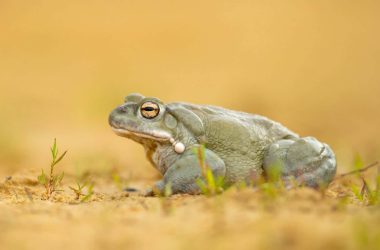Honeypot ants (Camponotus inflatus) hanging from the ceiling of a nest, engorged with nectar
Minden Pictures/Alamy
Honeypot ants (Camponotus inflatus) in Australia have been discovered to produce honey with antimicrobial properties, which could potentially lead to the development of new treatments for certain bacterial and fungal infections.
These ants are found in arid regions of central and western parts of Australia. Their colonies consist of regular worker ants and a specialized group of workers called repletes. The repletes gather nectar and store it in their extended abdomens, giving them a glassy, amber hue.
Andrew Dong, a researcher at the University of Sydney, explains that the replete ants serve as vessels for the brought-in nectar. They produce honey by regurgitating the nectar, which then feeds the rest of the colony.
For thousands of years, Indigenous Australians have consumed this honey and used it to treat ailments like sore throats, wounds, and skin ulcers, according to Danny Ulrich, an Indigenous Australian who assisted the researchers.
In a laboratory study, Dong and his team exposed various bacterial and fungal pathogens to different concentrations of the ant honey. They discovered that an 8% honey solution killed the bacterium Staphylococcus aureus, a major cause of skin and soft tissue infections that can lead to pneumonia or sepsis.
At a 16% concentration, the ant honey also proved effective against certain species of fungi, including Aspergillus fumigatus and Cryptococcus deuterogattii, which can both cause severe medical complications.
When comparing the ant honey with other types of honey, such as Manuka, which are known for their antimicrobial properties, the ant honey exhibited a narrower range of effectiveness. For example, it was not effective against Candida albicans, a fungus that causes thrush, or Escherichia coli, a bacterium responsible for food poisoning. In contrast, Manuka and other bee honeys were able to kill both of these pathogens. It is believed that the antimicrobial properties of most bee honeys are derived from their hydrogen peroxide content. Ant honey, on the other hand, contains lower levels of hydrogen peroxide, suggesting the presence of unique chemical compounds, potentially including antimicrobial peptides, produced by the ants.
Due to its rarity and cultural significance to Indigenous Australians, ant honey is unlikely to be used directly in medicines. However, the research team aims to identify the active compounds in the honey so that they can be replicated and used for the development of new treatments in the future.
Topics:












